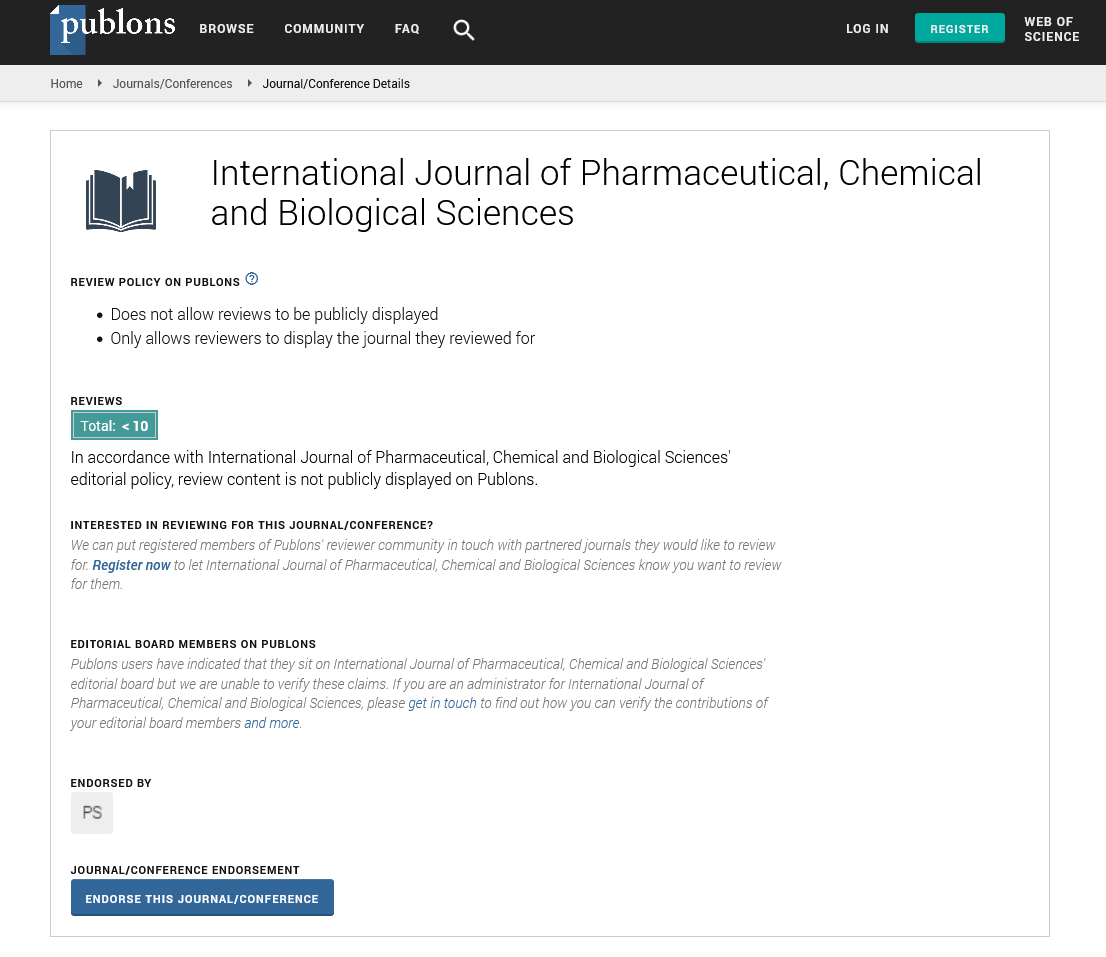Opinion - International Journal of Pharmaceutical, Chemical and Biological Sciences ( 2023) Volume 13, Issue 3
Biopharmaceutics: Bridging the Science of Drugs and Human Physiology
Michaela Stone*Michaela Stone, Department of Pharmacy, University of Iowa, USA,
Received: 30-Aug-2023, Manuscript No. ijpcbs-23-113686; Editor assigned: 01-Sep-2023, Pre QC No. ijpcbs-23-113686 (PQ); Reviewed: 15-Sep-2023, QC No. ijpcbs-23-113686; Revised: 20-Sep-2023, Manuscript No. ijpcbs-23-113686 (R); Published: 27-Sep-2023, DOI: DOI: 10.36648/2471-9668-13.3.7
Introduction
Biopharmaceutics is a multidisciplinary field that lies at the heart of pharmaceutical science. It explores the complex interactions between drugs and the human body to ensure that medications are not only safe but also effective. This field merges principles of pharmacology, physiology, chemistry, and mathematics to elucidate how drugs are absorbed, distributed, metabolized, and excreted within the body. In this comprehensive article, we will embark on a journey into the captivating world of biopharmaceutics, uncovering its historical evolution, principles, applications, challenges, and the promising horizons it holds for the future of drug development and patient care. The roots of biopharmaceutics can be traced back to ancient civilizations like the Egyptians, Greeks, and Chinese, who practiced the art of medicinal formulation and recognized the importance of dosage forms. The concept of pharmacokinetics, the study of drug Absorption, Distribution, Metabolism, And Excretion (ADME), gained prominence in the mid- 20th century, marking a significant advancement in biopharmaceutics. Understanding the various routes of drug administration and dosage forms is essential, as they greatly influence drug absorption. The process of drug absorption involves the movement of a drug from its site of administration into the bloodstream, where it can exert its therapeutic effects.
Description
Properties like solubility, lipophilicity, and molecular size can significantly impact drug absorption. The design of dosage forms, such as tablets, capsules, and injections, can influence drug release and absorption rates. Interactions between drugs can affect their absorption, potentially leading to reduced efficacy or increased toxicity. The presence of food in the gastrointestinal tract can affect drug absorption, sometimes delaying or enhancing it. Pharmacokinetic studies are essential in drug development, helping to determine dosing regimens, drug interactions, and bioavailability. Biopharmaceutical considerations guide the development of pharmaceutical formulations to optimize drug absorption and efficacy. Biological assays are used to assess the bioavailability and bioequivalence of generic drugs compared to their brand-name counterparts. The principles of biopharmaceutics are increasingly applied to personalize drug therapy based on individual patient characteristics. The development of drug resistance in various diseases, particularly in the case of antimicrobial agents, presents a significant challenge. The development and regulation of complex dosage forms, such as biologics and nanomedicines, pose unique challenges in terms of safety and efficacy. Ethical concerns, such as patient autonomy in drug therapy decisions, are gaining prominence in the era of personalized medicine.
Conclusion
Biopharmaceutics is an ever-evolving field that bridges the gap between the science of drugs and the intricacies of human physiology. It is a discipline where knowledge, innovation, and compassion converge to improve the lives of patients worldwide. As the world of healthcare and pharmaceuticals continues to evolve, the principles and applications of biopharmaceutics remain vital in drug development, personalized medicine, and the pursuit of safe and effective treatments for the diverse array of diseases that affect humanity. From ancient herbal remedies to the cutting-edge biopharmaceuticals of today, biopharmaceutics is the linchpin that connects the past, present, and future of medicine. It stands as a testament to human ingenuity and the unwavering commitment to alleviate suffering, enhance the quality of life, and unlock the mysteries of the human body, one molecule at a time.
Acknowledgement
None.
Conflict Of Interest
None.

